Copyright
C2 Global Law regularly advises clients on how to both maximize and protect their investment in any copyrighted materials. This often starts with an explanation of the nature of copyright. Although the Canadian, United Kingdom, and United States systems of copyright are largely similar, many people often believe specific parts of one such system are exactly the same as in another such system. The result, unfortunately, is confusion as to the scope and extent of one’s rights. In order to help our clients and potential clients understand copyright, we provide the following brief outline of the nature of copyright in Canada.
For further information on how we can assist you with your copyright needs contact C2 Global Law today.
WHAT IS COPYRIGHT?
Broadly speaking copyright is:
- the sole right to produce or reproduce an original literary, dramatic, musical, or artistic work
- has been extended to include copyright-like rights to other works including the protection of performers’ performances, sound recordings, broadcasts, and computer programs;
- prevents unauthorized public performance, publishing, translation, conversion, adaptation, recording or broadcasting of the work or any substantial part of it.
WHAT CAN BE PROTECTED?
The Copyright Act provides that copyright subsists in “every original literary, dramatic, musical and artistic work” and applies whether or not the work is published or unpublished. Additionally:
- copyright applies to original literary, dramatic, musical, and artistic works, whatever the mode or form of expression
- to be “original,” the work must be the product of the author’s skill and judgment that is more than trivial, and the work must not be copied from another’s work
- originality requirement does not mean that the work must be the product of genius or have a high degree of creative skill or have any artistic merit—maps, engineering diagrams, books, computer programs, plays, songs, paintings, photographs, etc.—are all proper subject matter for copyright.
WHAT CANNOT BE PROTECTED?
Although the rights provided under copyright can be broad, there are nonetheless some limits to the protection available:
- copyright does not protect an idea or concepts, but the specific expression of an idea or concept can be protected
- copyright does not apply to transient occurrences such as sporting events, although a film, videotape, or broadcast of the event would be protected
- copyright does not protect titles, names, slogans, or other short word combinations (such works may, however, be subject to trade-mark protection)
- copyright does not protect features of shape, configuration, patterning or ornamentation which are applied to useful mass-produced articles (such features may, however, be subject to industrial design (or as termed in the United States “design patent”) protection).
DURATION OF COPYRIGHT
In Canada, the term of copyright protection is:
- in most circumstances, the lifetime of the author plus 50 years from the end of the calendar year of her or his death
- for works of joint authorship, the 50 year period runs from the end of the year of death of the author who dies last
- for records, tapes, photographs (where the original negative was owned by a corporation not controlled by the photographer) and similar manufactured devices embodying a copyright work, copyright lasts for 50 years from the end of the year in which the original master or negative is made.
HOW IS COPYRIGHT PROTECTION ACQUIRED?
In Canada copyright protection arises automatically for works which are capable of being protected by copyright, provided that the work is original and:
- the author was a citizen of Canada or a qualifying foreign country at the time the work was created; or
- if the work has been published, the first publication occurred in Canada or in a qualifying foreign country.
WHO OWNS COPYRIGHT?
There are a number of exceptions, but in general:
- initially, the author of a work owns the copyright in that work
- if the work is an engraving, photograph or portrait and the original was ordered and paid for by some other person, then that other person owns the copyright in that work
- if the author made the work in the course of her or his employment, then the author’s employer owns the copyright in that work.
REGISTRATION OF COPYRIGHT
In Canada, unlike many other countries such as the United Kingdom, copyright registration is possible. One registers a copyright by completing an application and sending it to the Copyright Office of the Canadian Intellectual Property Office (CIPO), along with the appropriate fee. No copy of the actual work is filed with CIPO’s Copyright Office. The Copyright Office does not review or assess works in any way, nor does the office check to see whether the title of your work has already been used. Many works may appear with the same title, but if each work has been created independently, each will have its own copyright protection. A certificate of registration serves merely as a first proof of the subsistence of copyright and the particulars associated with the copyright as detailed in the application, which nonetheless may be disputed by another person.
For further information on how C2 Global Law can assist you with your copyright needs contact C2 Global Law today.

